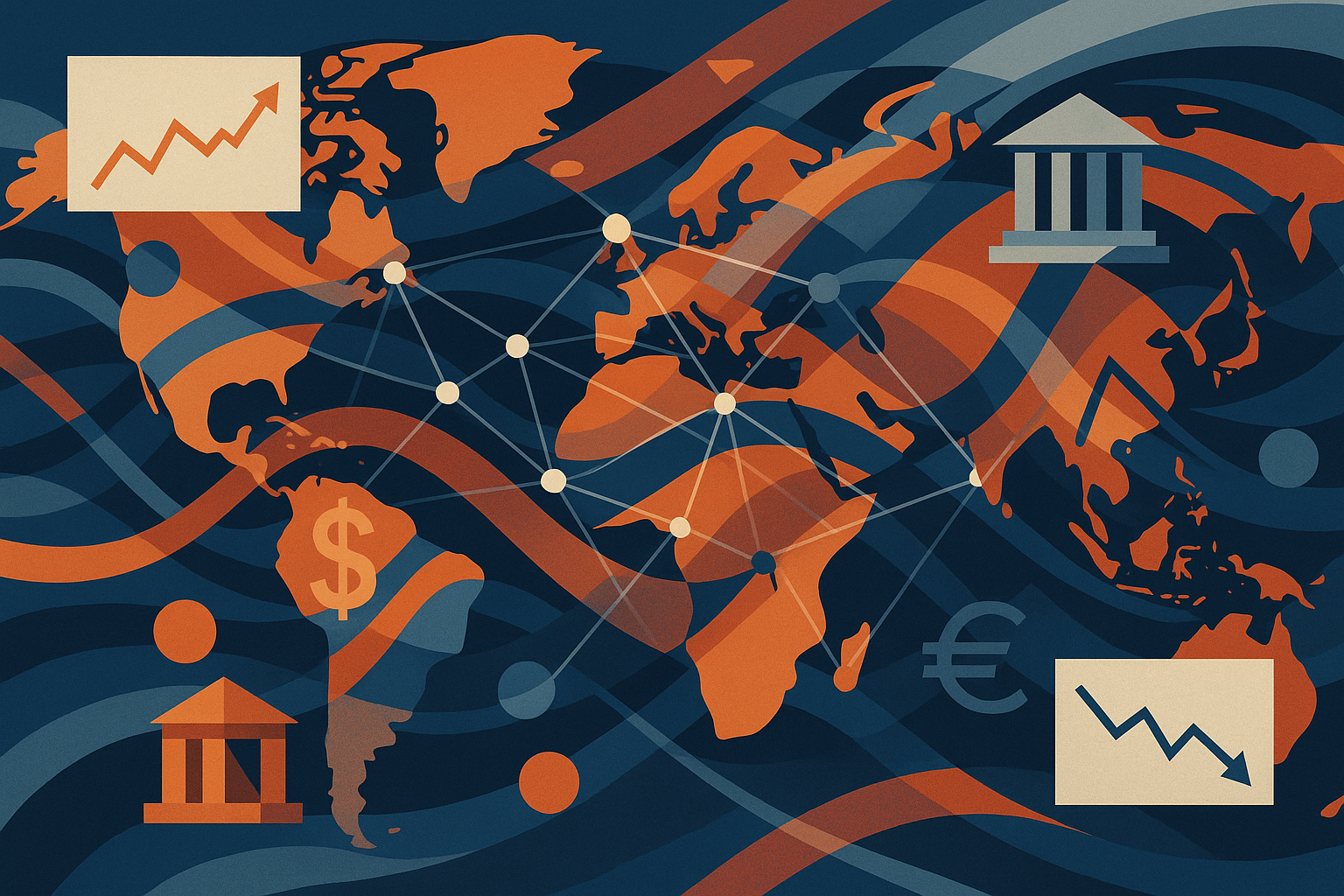Ever wondered what it looks like when the world fundamentally changes its relationship with uncertainty? Look no further than June 16-20, 2025 – five days that perfectly encapsulated how our global economy has entered an entirely new paradigm.
Picture this: While Tehran residents couldn’t sleep due to “constant sound of bombing” from Israeli strikes on Iranian facilities, central bankers in Washington were calmly deliberating interest rate policies. Meanwhile, global stock markets responded with what can only be described as a collective shrug – major indices showing only “modest declines amid Middle East tensions” being the financial equivalent of “just another Tuesday.”
Welcome to the new normal, where uncertainty isn’t a bug – it’s a feature.
When Crisis Becomes Background Noise
Let’s rewind to understand how we got here. Twenty years ago, a military conflict involving major oil-producing regions would have sent markets into panic mode. Fast forward to today, and we have Israel targeting “over 20 military sites in Tehran” while currency traders focus on Federal Reserve policy signals and inflation expectations rather than geopolitical headlines.
This isn’t market callousness – it’s evolution. After surviving the 2008 financial crisis, COVID-19, the Ukraine war, and now Trump’s tariff policies that have pushed “effective tariff rates to 100-year highs,” markets have developed something like institutional PTSD – but the productive kind.
Think of it as the economic equivalent of living in a city where construction noise is constant. Eventually, you stop hearing it and get on with your life.
The Central Bank Tightrope Walk
Central bankers today face a challenge that would have seemed impossible a generation ago: how do you set monetary policy when the world is simultaneously dealing with:
- Geopolitical military conflicts
- Trade war uncertainties
- Inflation concerns
- Diverging economic recoveries
The Federal Reserve’s approach tells the story perfectly. With market expectations of potential rate cuts by September, the Fed’s measured stance reflects not confidence but careful navigation through murky waters. This isn’t because economic conditions are perfectly clear – it’s precisely because they’re not.
Similarly, the European Central Bank faces its own complex calculations, balancing regional stability concerns with global uncertainties.
The New Market Psychology: Multi-Dimensional Thinking
Here’s where it gets fascinating. Modern markets don’t just process single shocks anymore – they’ve developed what I call “multi-dimensional processing capability.”
Take the currency dynamics during this period. Traditional economic theory would predict either strong safe-haven currency buying or strong dollar buying during geopolitical tensions. Instead, we saw complex cross-currents with “risk-averse flows and crisis dollar buying intersecting,” creating more nuanced equilibrium patterns.
This isn’t market confusion – it’s sophistication. Traders are simultaneously weighing:
- Geopolitical risks (favor safe havens)
- US monetary policy expectations (favor dollar)
- Oil price implications (complex effects)
- General risk sentiment (varying directions)
The result? A market that can handle multiple contradictory signals without breaking down.
From Decoupling to “Multiple Coupling”
One of the most misunderstood aspects of today’s global economy is the relationship between geopolitical fragmentation and economic integration. While politicians talk about “decoupling,” markets are actually experiencing what I’d call “multiple coupling” – more complex, harder-to-predict, but ultimately more resilient interconnections.
Mitsubishi Research Institute’s analysis of “global economic slowdown due to Trump tariffs” coexists with observations that “markets are gradually regaining composure.” This isn’t contradictory – it’s the new reality where economic actors build in uncertainty as a permanent feature rather than a temporary disruption.
Narrow Trading Ranges: A Symbol of Adaptation
The fact that major global indices maintained relatively tight trading ranges during such a turbulent week speaks volumes. These constrained bands don’t reflect boredom or indifference – they represent markets that have learned to price in constant volatility.
It’s like financial markets developing their own form of emotional regulation. Instead of wild swings between euphoria and panic, we’re seeing what might be called “calibrated uncertainty response.”
What This Means for Everyone
So what does this new paradigm mean for businesses, investors, and policymakers?
For Businesses: The old model of “crisis response plans” is obsolete. The new model is “permanent adaptability infrastructure.” Companies that thrive will be those that build flexibility into their core operations, not those that plan for specific scenarios.
For Investors: Forget about timing the market based on news events. The new skill is understanding how multiple uncertainty factors interact. The successful investor of 2025 doesn’t try to predict the next crisis – they build portfolios that can handle multiple crises simultaneously.
For Policymakers: The era of “grand strategies” based on stable assumptions is over. Effective policy now requires building institutions that can function effectively under persistent uncertainty.
The Bottom Line: Uncertainty as a Feature, Not a Bug
June 16-20, 2025, didn’t just show us another week of market volatility. It showed us a global economy that has fundamentally rewired itself for a world where the only certainty is uncertainty itself.
This isn’t a temporary adjustment period before we return to “normal.” This IS the new normal. And frankly, that might be a good thing. An economy that can handle multiple simultaneous shocks without breaking down is ultimately more resilient than one that depends on stable, predictable conditions.
The markets that seemed so chaotic during the 2008 crisis now look quaint compared to today’s multi-dimensional complexity. But we’re not just surviving it – we’re thriving in it.
The question isn’t whether we’ll return to the “simple” economics of the past. The question is: how quickly can we all adapt to the sophisticated uncertainty management systems that global markets have already built?
What do you think? Are we witnessing the birth of a more resilient global economy, or are we just getting better at managing chaos? Share your thoughts in the comments below.
Sources:
- CNN International: Israel-Iran conflict coverage, June 18, 2025
- NPR World News: Global economic developments
- AP News: International market coverage
- Al Jazeera: Middle East economic impact
- IMF: World Economic Outlook, April 2025
- WHO: Global economic health indicators


